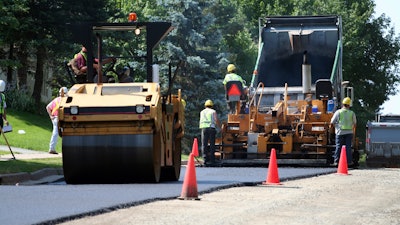
The level of compaction any asphalt mix receives directly impacts the quality and lifetime of that pavement.
“The single most important thing you can do to a pavement is compact it,” says Jim Scherocman, P.E. and annual speaker at National Pavement Expo. “A pavement that has the world’s best mix design compacted to 9% to 10% air voids is not going to perform well. Conversely, a pavement that has only a marginal mix design compacted to 7% air voids or less, will perform very well under traffic.”
Accepted knowledge says that for every 1% increase in air voids, about 10% of the pavement life may be lost. That’s because the more air voids a pavement has, the more that pavement is compromised in terms of pavement strength, fatigue life, durability, raveling, rutting and susceptibility to moisture damage.
However, there is a low air void limit as well. According to the Asphalt Institute’s website, “if air voids fall below 3%, there will be inadequate room for expansion of the asphalt binder in hot weather. When the void content drops to 2% or less, the mix becomes plastic and unstable.”
The paving industry relies on compaction to increase pavement density to extend pavement life. As a result of the compaction process, the asphalt-coated aggregate particles in the mix are forced closer together, which increases the amount of aggregate interlock and interparticle friction and also reduces the air void content of the mix.
"A consistent density level or air void content is what is really important," Scherocman says. "The correct rolling pattern obtains uniform density, which achieves performance. The level of air voids obtained during rolling needs to be the same both longitudinally and transversely."
Therefore, the work done by roller operators needs to be done correctly and consistently in order to ensure the success of the pavement life. If the operator isn't running it at the right settings, the right speed, etc., it can affect the quality of the mat, and that quality is important to the life of the road.
Additional resources:
How to Compact Asphalt Pavements
How to Achieve Optimum Compaction
How to Overcome Common Compaction Quality Challenges
Top 5 Tips for Managing Density



















